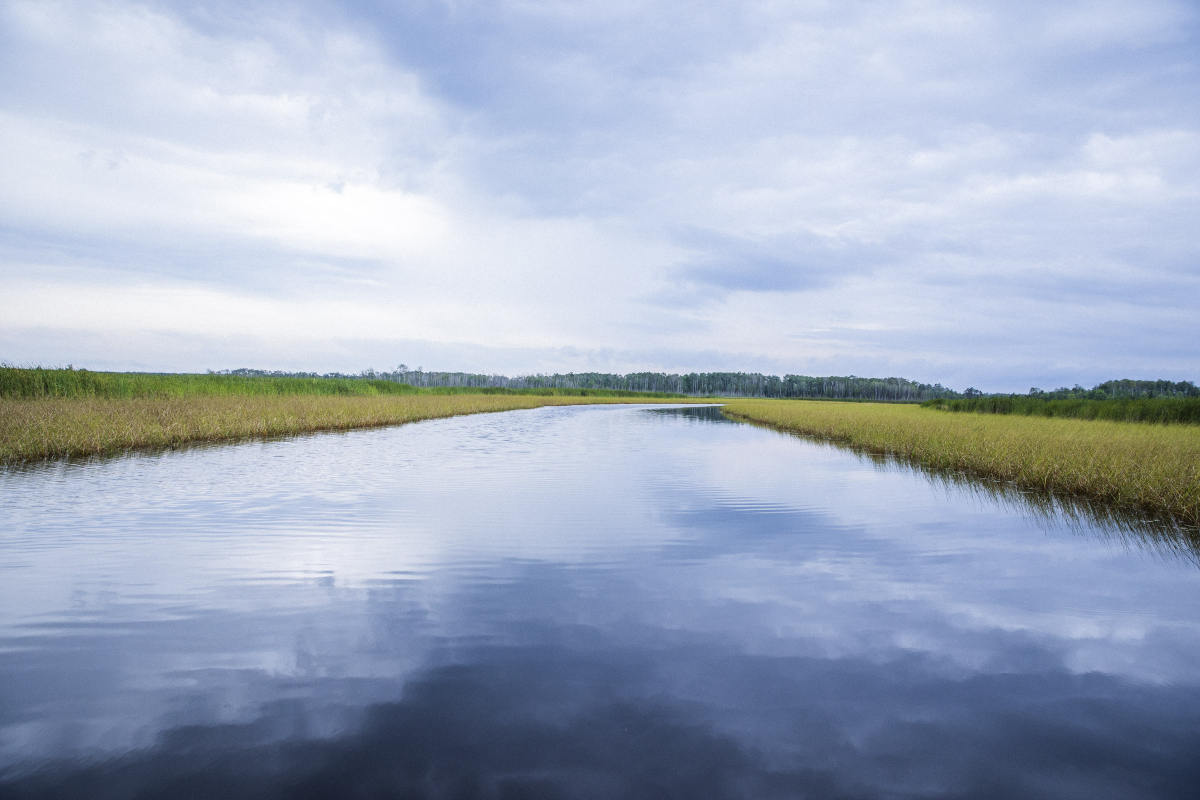Support strong Canadian climate journalism for 2025
It all started with a chance meeting.
Mary Mazzio, a self-proclaimed recovering lawyer, was looking for a legal case that could provide an “amphitheatre” for a documentary showcasing the voices of Indigenous Peoples in the United States.
She was introduced to Mike Wiggins, leader of the Bad River Band, an Ojibwe nation in northern Wisconsin on the southern shore of Lake Superior. It was during COVID, so once things died down, Mazzio was invited by Wiggins to Bad River “to do some canoe diplomacy,” Mazzio told Canada’s National Observer, recalling how her work on the documentary Bad River began.
Bad River Band was in the middle of a legal fight with Canada-based Enbridge over its contentious Line 5 pipeline, which carries oil and gas from Alberta to Ontario while crossing the American border.
The documentary tracks the legal fight through a decision by a U.S. judge that ruled Enbridge had to pay Bad River US$5.1 million in Line 5 profits and move the pipeline by 2026 to avoid an immediate shutdown that would cause economic havoc.
Enbridge appealed. Global Affairs Canada even stepped in in 2022 to invoke a mechanism within the 1977 oil treaty signed between the United States and Canada to ensure the pipeline would remain flowing.
At first, the documentary traces a long-standing assertion by Bad River arguing a far older treaty signed between Bad River and Washington, D.C., in 1854 gave tribal sovereignty to the band and trumped the oil treaty signed more than a century later.
The band disputes Enbridge on a contractual level, ensuring a legal fight that spills into tribal politics and Facebook spats. But the documentary always shows the fight against Enbridge from the band’s point of view, leading to a disgruntled Canadian oil company.
Enbridge slammed Mazzio, calling into question how the documentary portrays Enbridge’s side of the story, despite a sitdown with one of its communications officers.
“Enbridge offered to work with the filmmaker who, unfortunately, did not show much interest in telling a balanced story,” Enbridge said in a statement to Canada’s National Observer. The company said the film gives short shrift to the millions of people who rely on the pipeline on both sides of the border and agreements signed by the band giving permission for the line.
But for Mazzio, the story is about tribal sovereignty and who has a right to control the land.
Mazzio began her work on Bad River as if she thought she was about to document a classic David versus Goliath story centring a small nation fighting for the protection of Lake Superior, referred to in the documentary as America’s “freshwater stronghold.”

Instead, what she found was the people of Bad River were strong and willing to share their stories about “every piece of history where their people stood up and spoke out and fought back,” Mazzio said.
Along the way, however, the documentary tells stories that may be familiar to mainstream Canada now but not to many Americans oblivious to colonialism.
Among those stories were the history of treaties and boarding schools, and the abuse found in them, which Mazzio says isn’t as well-documented in the mainstream as in Canada.
“In the States, we’re probably two or three steps behind,” she said.
The documentary also chronicles the American Indian Movement and its role in bringing light to Indigenous rights and self-determination
Finally, it moves to two recent resistance movements led by Bad River.
The first is the Walleye Wars, where sport fishers led nationalist protests against Ojibwe treaty rights to fish. The archival footage in the documentary shows young and old white fishermen waving American flags and shouting racist profanities at the Indigenous harvesters. It’s a scene Mazzio calls a “real irony” given the number of veterans who are centred in Bad River.

The second is the battle against an open-pit iron ore mine on their homeland in 2013, which the Bad River Band successfully stopped in 2016. Mazzio included these stories because “that’s where the Bad River people wanted to go,” she said.
It’s why Mazzio calls the film a historical retrospective of resilience and resistance.
“You have to stand up for what you believe in,” Mazzio said, echoing Wiggins. “And we have done that for thousands of years.”
Bad River is currently showing in theatres in the United States, although Mazzio is hoping to bring it to Canadian audiences soon. First Nations on the Canadian side of the border are interested in hosting screenings, Mazzio said.
“We're very excited to bring this to Canada and have the band's perspective up north of the border as well,” she added.
Matteo Cimellaro / Local Journalism Initiative / Canada’s National Observer







Comments